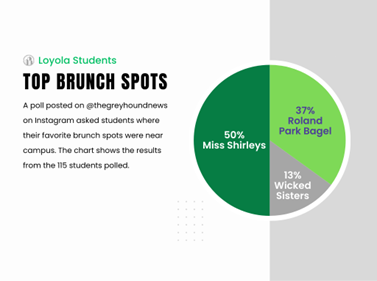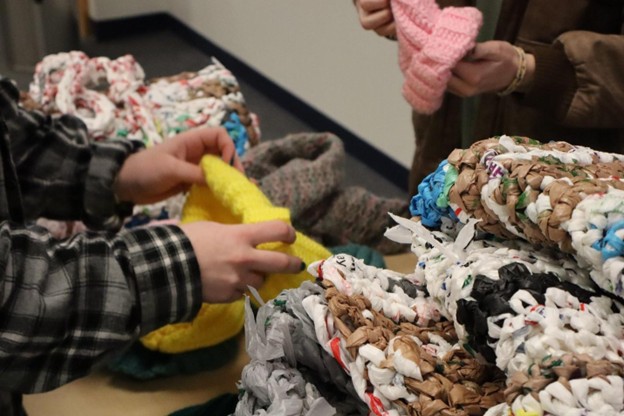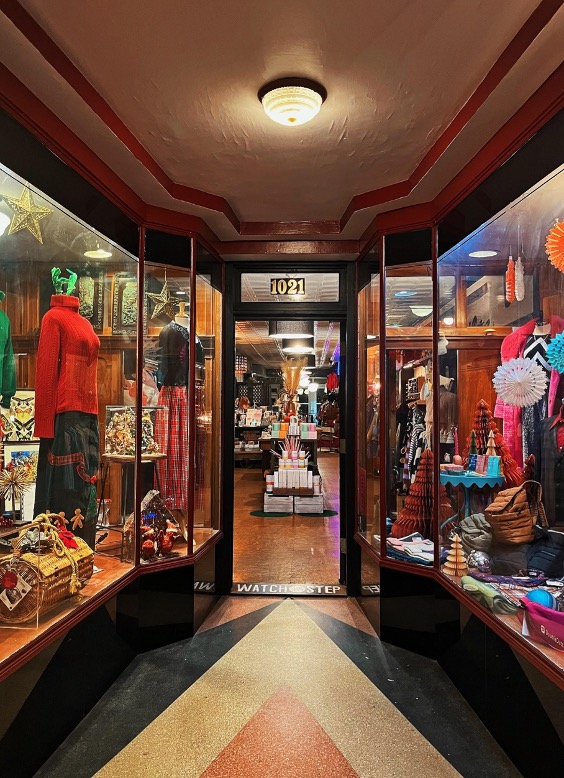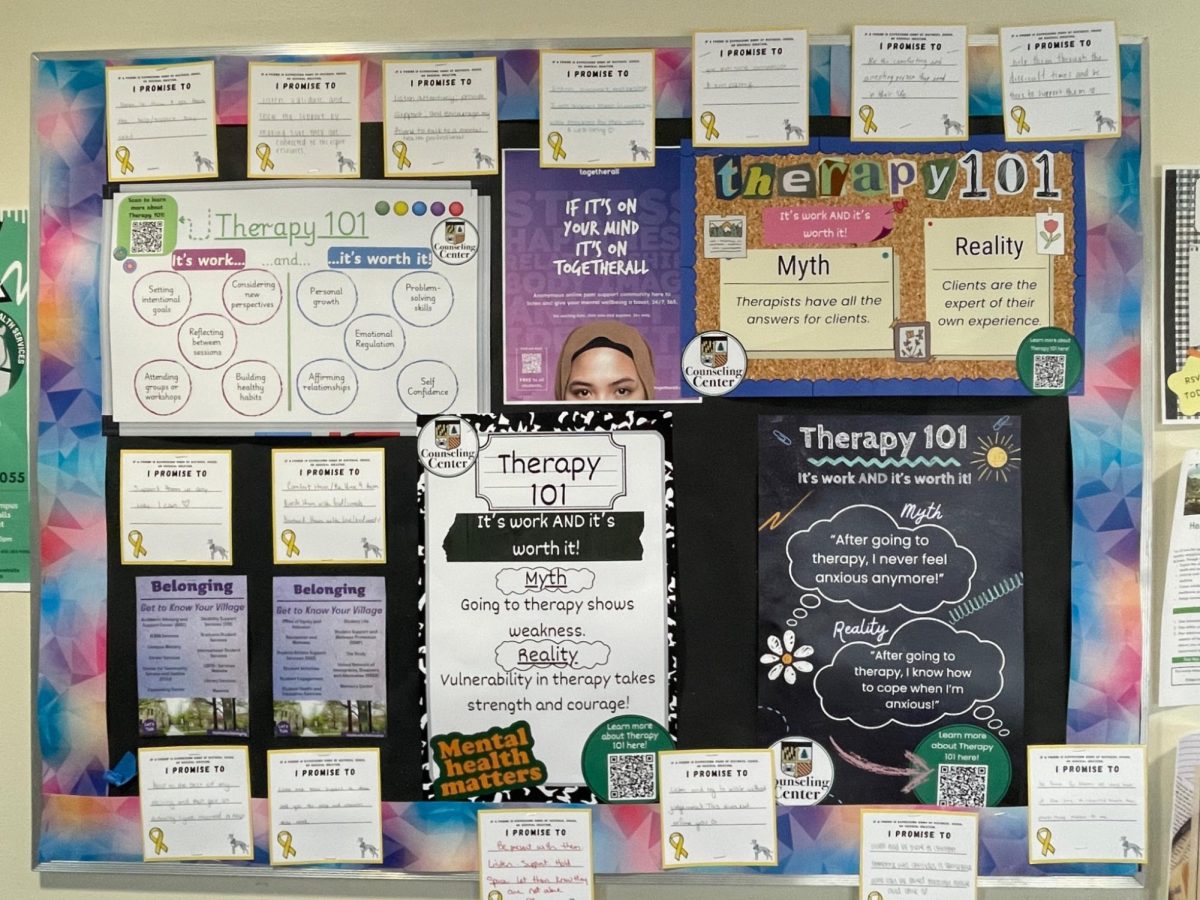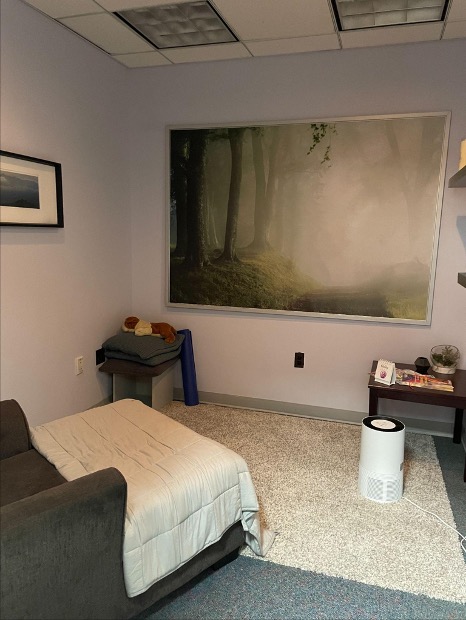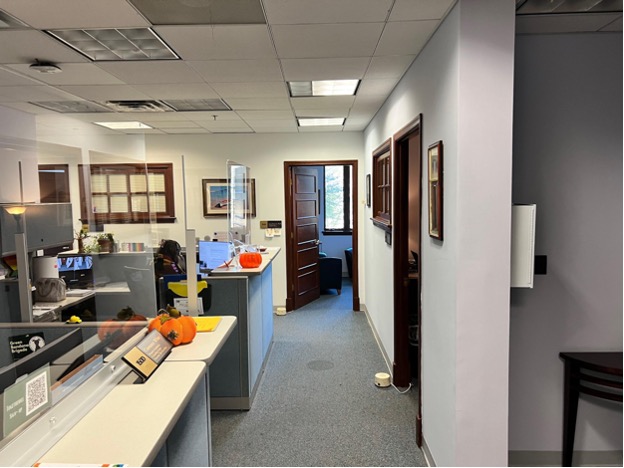The following does not represent the views of Loyola University Maryland, The Greyhound, or Loyola University’s Department of Communication.
Imagine you walk around campus one day and instead of everyone walking to class or getting in line at the dining hall, each student is crowded around in a circle, petting and scratching the dog that lies in the middle of the Quad. “Aww”’s surround the space, as each student gives the fluffy friend attention. What once was a campus filled of chatter and movement is now quiet, with soft paws padding across the ground.
Loyola University Maryland is a dog school. President Terry Sawyer loves dogs, posting his love for his dogs, Annie and Clementine, on his Instagram. Loyola even has a website where future students can submit a picture of their furry friend wearing the classic green and white coded bandana. Dogs flood the page as students share their love for the animal in a collection of images. We also can’t forget about our mascot being a greyhound!
Students can find numerous dogs walking around campus with many neighbors utilizing the Evergreen campus for their daily walks; I have even seen a dog walk around Starbucks as a student grabbed a refresher from off the “Pick-Up” table. Even though you may occasionally see a dog walking through the Quad, it is clear we need a bit more paw-sitivity.
The possibility of making a walk to class like a furry adventure, or the Quad like a happy dog park is within our reach — we just need to advocate for it. Tell your professors to bring their furry friend to campus, ask for more therapy dogs, and encourage residents to bring their dog onto campus – more dogs, more smiles, more wagging tails.
Norman Sedgley, an Economics professor at Loyola University Maryland, brings his dog, Dale, onto campus at least once a week.
“I started bringing Dale onto campus in the fall of 2023. [Students] can’t have their canine friends on campus and in the dorm, which is why I enjoy sharing Dale with the students,” Sedgley said.
Dogs on college campuses have become extremely popular since 2005 mainly due to the low/no cost. In the United States, a survey conducted on college students proved that 96% of college freshman were in favor of having a pet therapy program on campus.
Dealing with stress, anxiety, depression, and even homesickness has made it to more of a reason to implement these dog programs on campus. About 45% of American college students have experienced higher levels of stress.
Dogs have demonstrated their ability to bring calm in stressful situations. The animal also provides companionship, emotional support, service, and unconditional love: everything you would want and need in life!
Maria Torchia ‘27 shares her thoughts on dogs around campus.
“Seeing dogs on campus genuinely just makes me happy. I could be having the worst day and seeing a dog makes me smile,” Torchia said.
“I read [a quote] somewhere that said, ‘I wonder if God made dogs not able to speak because they truly show us that actions speak louder than words,’ and I completely agree with that, because they show us unconditional love without words,” Torchia said.
Not only does the presence of dogs make humans feel more relaxed and happier, but it also benefits the dog. Animals that are exposed to more people and different environments are less likely to demonstrate aggression. It can also be fun for the furry friend, as the pet can join their human in every interaction and adventure.
Loyola University Maryland offers therapy dogs on campus when it nears exam time, as well as sporadic mental health days hosted by the Counseling Center. These animals are on campus for only three to four days throughout each semester.
First-year Mathias Hieber ‘28, shares his take on implementing more dog therapy programs on campus.
“Incorporating more programs throughout the semester rather than just those specific days would be better for students because people are stressed all throughout the semester, not just for finals,” Hieber said.
“Dogs create a more friendly and welcoming environment while also developing a better space to live and learn. I would love to see more dogs around Loyola,” he said.
As much as students would love to see an increase in dogs on campus, there are considerations people must make before bringing them in. Is the campus a safe place for the dog? Is the dog well-mannered to be around an environment full of people?
If the dog comes into the classroom, you may want to question if the dog detracts or enhances the learning environment. Are the students comfortable with the dog in the classroom? Are there any students that are allergic to dogs? These are a few things to think about.
If you can answer all these questions confidently, bring the dog!
It is time we acknowledge that the existence of dogs on campus is a reminder of the simple joys in life. Their wagging tails and calming presence offer more than just companionship. They act as a stress reliever and remind us to be present. So, maybe, a campus filled with more dogs is the key to encouraging not only academic success, but emotional well-being and connection too.
The Greyhound is committed to publishing a diversity of opinions. We’d like to hear what you think. Our email: greyhoundops@gmail.com.


























